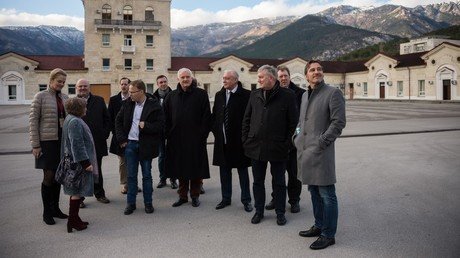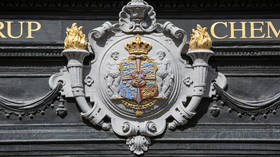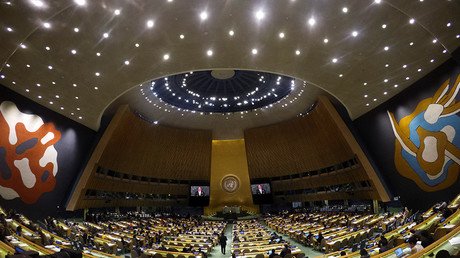Russia accused of ‘erasing Muslim heritage’ for restoring collapsing Crimean mosque
Russia has been accused of trying to “erase Crimean Muslim culture” by restoring a local mosque. However, workers at the site say they are saving the historic building from crumbling after years of neglect.
Many sites in the Crimean peninsula remain in poor condition because there were insufficient funds allocated for their upkeep and restoration during the years that the region was part of Ukraine. The Big Khan Mosque of the iconic Bakhchisaray Palace was no exception. However, not everyone was happy when Russia started working in January to prevent the 500-year-old building from collapsing.
On Sunday, Qatari network Al Jazeera published an article about the restoration process, entitled, “Is Russia attempting to erase Crimean Muslim culture?” The author of the piece, Moscow-based journalist Mansur Mirovalev, gave an overdramatic depiction of the construction site, comparing the mosque to a “bandaged patient.”
The article cited Ukrainian officials and the Tatar community’s self-proclaimed leaders, who chose to leave Crimea after it reunited with Russia in 2014. Those who were interviewed called the restoration a “part of Kremlin’s drive to reshape, ban and erase the cultural identity of Crimean Tatars.” A Crimean official during the Ukrainian rule, Edem Dudakov, claimed that “the palace will be lost; what they're building is a sham.”
However, it seems more likely that the mosque would have been lost to history if the urgent restoration work did not start. The Big Khan Mosque was built in 1532 using wooden materials, which have not passed the test of time. RT Ruptly video agency has visited the site and examined the damaged tiles and dried out beams that were removed from the historic building – the wood was so fragile that it could be broken with bare hands.
The wooden beams “lost their bearing capacity completely,” Aleksandr Yasko, a construction supervisor for the ATTA company, which is carrying out the restoration, said. “They’re doty; damaged by timber beetle. A mycological examination was carried out and it established that the beams are all infected with fungi. It lives there, in 100 percent of the structural beams.”
Yasko emphasized that the historic building is treated with extreme care and showed the tiles that were removed from the roof of the mosque. “Not even a single piece of tile has disappeared. It’s all stored on the territory of the open-air museum as well as the rotten beams.”
Removing the roof tiles was “a very complicated job… as every piece had to go through the hands of several workers. Besides, it had to be taken down from the height of 13 meters,” he said. The mosque has been losing tiles for centuries because the roof, which was redesigned after the 1736 fire, turned out to be too steep. Yasko said that the historic shape of the Big Khan Mosque will remain unchanged after the restoration, but the newly-placed tiles will be equipped with a special fixing system that will prevent them from sliding.
The Big Khan Mosque wasn’t just in poor condition, it also posed a real danger to the people who visited the site. “According to my estimations, the roof would’ve simply collapsed in the next five years and people would’ve been killed,” the foreman said.
Think your friends would be interested? Share this story!















